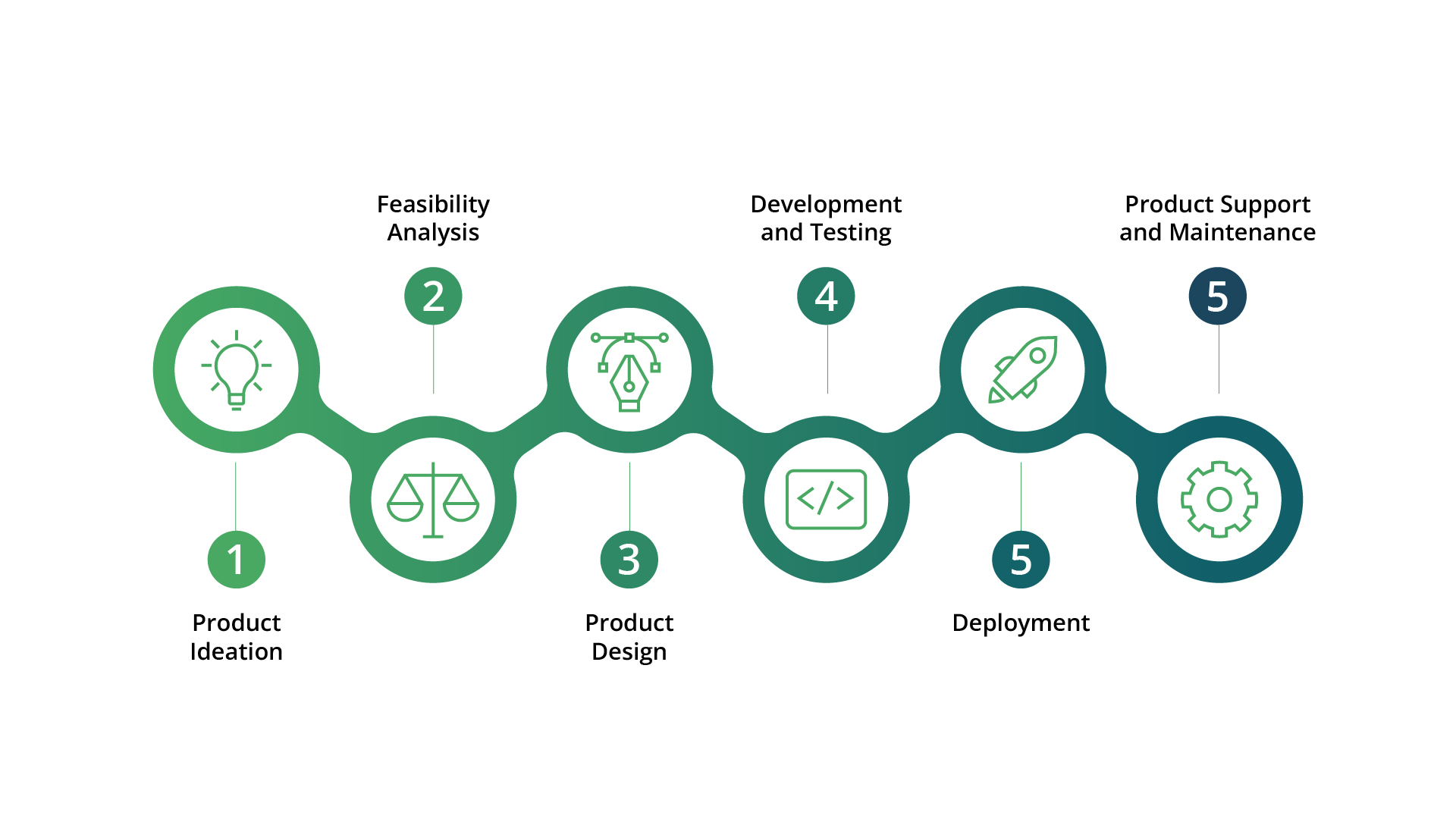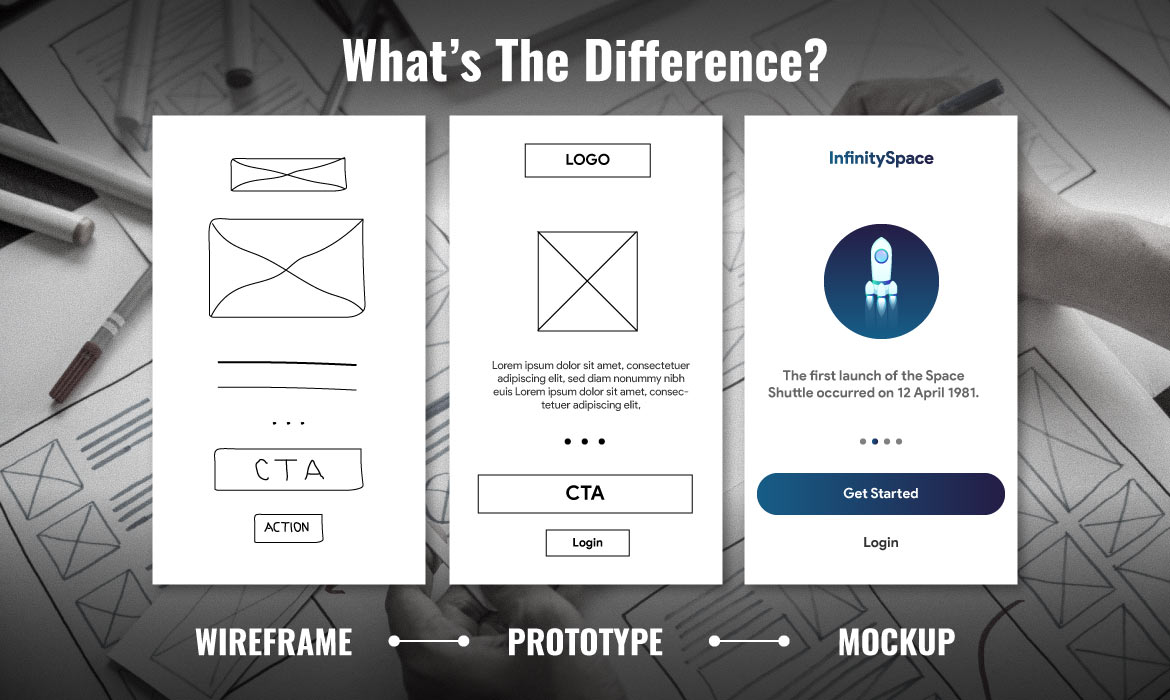


Source: Springboard
The next step in the design process is to define the basic structure and layout of your product through wireframes and interactive prototypes. Sharing a visual representation with stakeholders early on makes it easy to get their feedback and refine the product design before it becomes too expensive.


